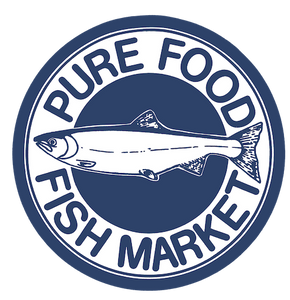FRESH BLOG
For all things Fresh Seafood, cooking inspiration, and more!

Deliciously Done: How to Cook Seafood Like a Pro
Cooking seafood to perfection can seem daunting for the inexperienced, but with the right tips and techniques, you can achieve delicious, quality results at home! From selecting the freshest catch to mastering various cooking methods, this guide will equip you with everything you need to know on how to cook seafood like a pro. Whether you're grilling, baking, or boiling, we've got you covered. Read on to discover how to make seafood dishes and impress your family and friends.
Understanding Seafood Varieties
Before we discuss how to cook seafood, we need to understand what we’re working with. Seafood comes in many forms, and understanding these varieties can help you choose the right type for your recipe and cooking method.
- Fish: Popular choices include salmon, cod, tilapia, and halibut. Fish are versatile and can be grilled, baked, or pan-seared.
- Shellfish: This category includes shrimp, lobster, crab, and crayfish. Shellfish are more commonly used in boils, sautés, and as toppings for pasta.
- Mollusks: Clams, mussels, oysters, and scallops fall under this category. They are typically steamed, grilled, or baked.
Shellfish and mollusks are often grouped together, but for the purposes of this “how to make seafood guide,” we will address them separately since they require different cooking times and methods.
Good-To-Know Tips: In General
Cooking seafood is not terribly complicated and requires some preparation. When you receive your seafood, always check it for quality before cooking. This includes smell testing, visual inspection, and checking the expiration dates. Once you’re ready to go, be sure to pick out common seafood seasoning combinations like olive oil, lemon juice, garlic, and herbs. These are common favorites for a reason and pair well with the oceanic and fish flavors.
How to Cook Seafood: Grilling
When done right, grilling seafood can impart wonderfully smoky flavors. Before placing the seafood on the grill, make sure it is properly preheated to prevent sticking and breaking apart, especially for delicate fish. Using a fish basket or foil can help keep your seafood intact. Once on the grill, avoid moving the seafood too much to avoid breaking the meat apart. This has the added bonus of achieving grill marks and a deliciously charred exterior.
How to Cook Seafood: Baking
Baking is a safer cooking method that helps retain the moisture and natural flavors of seafood. To prepare, place the seafood on a baking sheet lined with parchment paper or foil. Covering the seafood with an additional layer of parchment paper or foil during baking can help keep it moist. This method works particularly well for fish fillets, providing a tender and flavorful result without much effort.
How to Cook Seafood: Pan-Sear
Pan-searing is an excellent way to create a crispy, flavorful crust while keeping the inside tender. Use a heavy-bottomed skillet and heat a high smoke point oil like canola or grapeseed oil over medium-high heat. This method is perfect for fish fillets and scallops. To achieve the best crust, ensure the seafood is dry before seasoning and placing it in the hot oil. Like with grilling, you should resist the urge to move the seafood around too much and let it develop a golden-brown crust before flipping it.
How to Cook Seafood: Seafood Boil
Hosting a seafood boil may sound easy, but there are a lot of things that could go wrong. For a classic seafood boil, combine shrimp, crawfish, crab, sausage, corn on the cob, and red potatoes in the pot and let them cook together. There are many recipes online detailing the perfect seafood boil but the best seafood boil recipes can be found at Pure Food Fish Market.
Common Mistakes to Avoid
There’s no point in learning how to make seafood if you end up falling into these common mistakes. The most common in cooking seafood is overcooking (which results in dry, tough meat). When cooking seafood, use a meat thermometer to check doneness whenever possible. Fish are typically done at an internal temperature of 145°F, and shellfish and mollusks are done when the shells pop open or when the meat turns opaque and firm. If you don’t have a thermometer for fish, look for opaque flesh that flakes easily with a fork.
World-Famous Recipes at Pure Food Fish Market
Cooking seafood to perfection doesn't have to be scary. With this beginner’s guide to understanding different seafood varieties and mastering cooking techniques like grilling, baking, pan-searing, and boiling, you can cook great seafood at home. Ready to get awesome seafood to impress your friends and family? Visit Pure Food Fish Market for the

